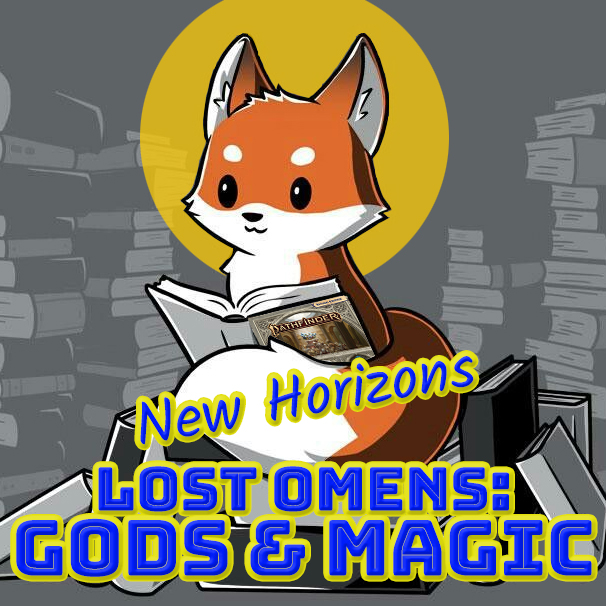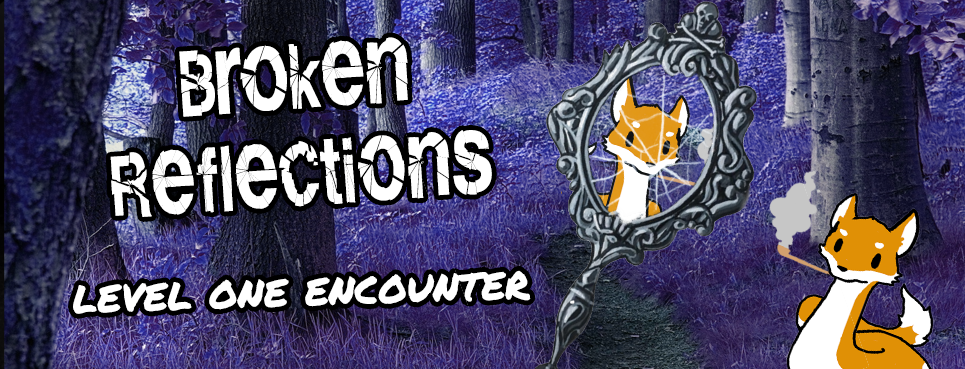Can you believe we already have five hardcover books for Pathfinder Second Edition?! And Lost Omens: Gods & Magic is stuffed with delicious new content. Like my last post detailing Lost Omens Character Guide, I’m diving deep into this book’s mechanics to see what new tools it offers us as designers and developers.
This is not necessarily an all-inclusive list of innovations, given every new rules option in a book is theoretically a “first”. I’m sure there are things you feel should be included that didn’t excite me, not to mention things I could have just missed. So please, feel free to discuss what you felt should be added, or if there’s anything here that isn’t as special as I thought it was.
New GM Tools:
Alternate Domains (pg 7-8): Some deities have multiple alternate domains you can get with the Expanded Domain Initiate Feat. You can even design your own with the Splinter Faith feat, which set’s its own precedent for being the first feat that requires you to “detail the fundamental tenets of your faith”.
Divine Intercession (p 9, p 13-51): Each deity has boons and curses it can bestow on its followers! There are some freebies you can snag from the Free Web Supplement, or you can check out KDN as Gods by our own Vanessa Hoskins.
Deity Entries (p 10-11): The book gives us a template for listing a core and minor deities’ stat blocks, including details like Sacred Animals! (Guess what mine is?)
Pantheons (p 92-93): For those of us who have a hard time choosing just the right deity, we finally have stat blocks and rules for Pantheons! You can see further examples of Pantheons at Luis Loza’s blog post “Friends in High Places” on the Paizo Blog! (They are even Pathfinder Society legal!)
Philosophies & Spirituality (p 94-101): The book also gives us stat-blocks for philosophies like God Calling and the Esoteric Order of the Palatine Eye. I could even see some of my players wanting to create their own, which is fine since they don’t really grant a mechanical bonus.
Divine Intercessions:
Gozreh (p 27): “Lightning always targets you” seems like a useful sentence, especially if you have a PC who likes to walk around during exploration mode with their weapon drawn in the rain.
Lamasthu (Moderate Curse) (p 33): This is the first time I’ve seen an ability that increases the range by which a creature can be detected by scent. Now I know what to do when a player at my table refuses to bathe.
Rovagug (Minor Boon) (p 41): This is worded differently from Inventive Offensive, replacing any prior Deadly traits rather than potentially letting a weapon have two deadly traits.
Rovagug (Moderate Boon) (p 41): This is the first time I’ve seen a codified ‘eat strange things’ ability in Pathfinder Second Edition, and I’ll eat my hat if it’s the last.
Sarenrae (Major Boon) (p 43): This is a great rider to any enchantment spell or truce effect. I enjoy seeing the codification and examples of “gain an advantage in ensuing combat”.
Sarenrae (Minor Curse) (p 43): Sunburns can cause Clumsy 1. Remember your lotion.
Torag (Major Boon) (p 47): I never thought of having one exploration activity (Resting) count as another (Standing Guard). You think I would, given I should be resting right now…
Zon-Kuthon (Moderate Curse) (p 51): The idea of taking Mental damage when you see something unpleasant doesn’t hurt me at all. More!
Zon-Kuthon (Major Curse) (p 51): I feel the phrase “emotion effects based on positive emotions” is positive for the system.
Avatars:
Creative Attacks: Check out the attack names on several of these. Avatars of Casandalee can hit you with a “Logic Blast”, Nocticula with a “Magnanimous Smile”, and Chaldira with a “Fistful of Buttons”! There are so many flavorful and fun abilities in these stat-blocks!
Alseta (pg 53): “Dimensional Speed” and “Portal Toss” are both new and insanely cool. You basically become Yugo from Wakfu. Teleport spam!
Hei Feng (pg 63): “The caster is immune to this (splash) damage” is awfully considerate of someone who loves murder! (Well, murders of crows.)
Feats:
Battle Prayer (p 104)/Evangelize (p 105)/Sacred Defense (p 105): These are the first skill feats that give you significant offensive encounter actions, such as dealing damage or making a target stupefied! The counter for the first two it is pretty icky (NSFL).
Bless Tonic/Toxin (p 104): This feat improves crafting magic items by giving them additional effects and traits. It may or may not also let you carbonate your healing potions.
Charlatan (p 104): Every edition of the game needs something like this. And people said Razmir wasn’t in the book.
Numb to Death (p 105): “You have died at least once” is a fun prerequisite we all qualify for eventually.
Syncretism (p 105): This feat must be kept in mind for all future designers when looking to restrict the use of favored weapons, such as using divine weapon techniques (potentially letting you use one weapon for another god’s techniques). So word your feats right! This (and splinter faith) also lets players pick and choose domains, but that is far less potentially abusive given you will still have a limited focus pool.
Agitate (p 106): I love the idea of enchantment spells that give the target the option to take mental damage instead, even though I think this one is too tame.
Expeditious Excavation (p 107): Oh hey look, rules for sudden holes! The extra-dimensional baggage of Create Pit was the pits. This new spell is a pretty effective but tame way to allow casters to reshape the battlefield without completely breaking an encounter.
Fungal Hyphae (p 108): I can see monster abilities that sort of function like this, with plants and other material. Imagine a velstrac that can do this with chains!
Gravity Well (p 108): “Functions as Gravity Well” seems like an ability we will see in future publications. This is a pretty universal and fun ability, done in a well-balanced package.
Ill Omen (p 108): This isn’t the first time we’ve seen a misfortune effect, but this particular spell was seen so often in 1e statblocks I wanted to point out that it made it here.
Liberating Command (p 108): This spell saw tons of use in 1e statblocks too.
Reflection Scales (p 109): There were spells like this in 1e, but keeping track of how much damage a spell has absorbed and using those points for another purpose is always welcome design space.
Shifting Sand (p 110): This does quite a bit, but I enjoy seeing the phrase “any tracks in the area are destroyed”.
Slough Skin (p 110): “Effects that coat your skin” is new. Now excuse me while I forget this spell exists. Euugngh…
Time Bacon (p 111): This spell is absolutely insane. Any spell that practically forces you to pull out your phone and take a photo of the battlefield is going on a list like this. We’ve all wanted to play characters with powers like this, but the first time you go to use it you end up whispering “I’m sorry” to your GM and asking for a rebuild. I’m sure we’ll see a really cool encounter designed with it in an AP though!
Ghostly Transcription (p 115): I enjoy having rules for casting spells using written words instead of talking, and who they’d affect.
Eject Soul (p 117): They fixed low-level players using incorporeal to see through walls and scout past doors! Having to keep a line of sight between the ghost-body and a safe source is a really clever fix!
Ectoplasmic Interstice (p 117): Oh, hey, precedent for what happens when ghosts become solid. Casper must be thrilled.
Asterism (p 117): Spells that require specific positioning of more than just the caster really help play up the idea that Pathfinder Second Edition is more and more about teamwork and the party, rather than an individual’s abilities. I might even argue that the very nature of this spell makes it my favorite and more noted mechanic in this book, even if I’ve ranted more about Time Bacon.
Swarm Form (p 118): Eventually every game is going to have that druid who wants to become one of the most unbalanced types of creatures in the game. I’m pleased to see they codified it well.
Stasis (p 118): Every game needs a stasis effect like this, so I’m glad it’s being codified so early and in a way that is pretty darned balanced.
Equipment:
Modular (p 120): This weapon trait lets weapons switch around what type of damage it deals, as listed in the trait. Right now we only have B, P & S, but we could theoretically see weapons deal different types of damage, including stuff like energy damage!
Ranged Trip (p 120): So you can guess the bolas as in this book, right?
Dagger of Eternal Sleep (121): Coup de grâce is back on the menu, boys! Honestly, I’m not sure why this even has grievous since it should take out most anything, but I’ll let it slide in the name of Achaekekekekek.






